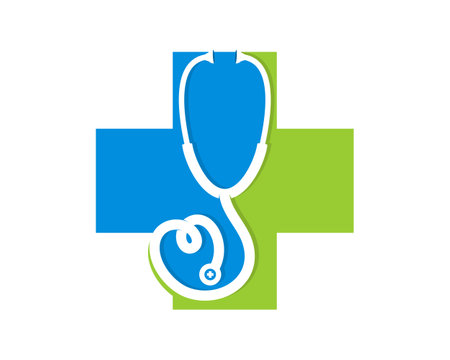Introduction to Dry Brushing
Dry brushing is an ancient self-care ritual that has recently gained a surge of popularity in American wellness routines. At its core, dry brushing involves using a natural-bristled brush on dry skin with gentle, sweeping strokes, typically before showering. This technique traces its roots back to Ayurvedic medicine and has been practiced for centuries in various cultures around the world, including Ancient Egypt and Greece. Americans have embraced dry brushing as part of their holistic approach to health and beauty, attracted by promises of detoxification, improved skin texture, and enhanced overall well-being. The method’s simplicity, affordability, and natural appeal make it especially popular among those seeking non-invasive ways to support their body’s natural processes. As more people prioritize self-care and mindful wellness habits, dry brushing has found a prominent place in daily routines across the United States.
2. How Dry Brushing Supports Detoxification
Understanding how dry brushing aids detoxification starts with the lymphatic system—a critical part of your body’s natural cleansing process. The lymphatic system is responsible for transporting lymph, a fluid containing white blood cells, throughout your body to help eliminate toxins, waste, and other unwanted materials. Unlike the circulatory system, which relies on the heart to pump blood, the lymphatic system depends on muscle movement and manual stimulation to keep fluids moving efficiently.
The Lymphatic System at a Glance
| Lymphatic Function | Benefit to Your Body |
|---|---|
| Removes Toxins & Waste | Helps prevent buildup that can impact health |
| Carries Immune Cells | Supports immune defense against illness |
| Regulates Fluid Balance | Reduces swelling and puffiness |
How Dry Brushing Stimulates Lymph Flow
Dry brushing uses gentle, sweeping strokes across the skin with a natural-bristle brush. This physical action helps manually stimulate lymphatic circulation just beneath the surface of your skin. By encouraging lymph flow toward major drainage points (such as underarms and groin), dry brushing can help your body more efficiently process and remove toxins.
Key Benefits for Detox and Health:
- Promotes healthy lymph movement, supporting your body’s detox process
- May reduce feelings of sluggishness or bloating associated with poor circulation
- Can boost overall energy by helping clear waste from tissues faster
This simple self-care ritual provides an accessible way to support your body’s natural cleansing abilities—making it a popular practice among wellness enthusiasts across the United States.

3. Improving Skin Texture and Appearance
One of the most celebrated benefits of dry brushing is its ability to improve the skin’s texture and overall appearance. By incorporating regular dry brushing into your self-care routine, you can effectively exfoliate the skin, removing dead skin cells that can make your complexion look dull and rough. This natural exfoliation process encourages cell turnover, revealing fresher, more radiant skin underneath. Additionally, dry brushing helps reduce dryness by stimulating oil glands, allowing your skin to retain moisture more efficiently.
How Dry Brushing Enhances Your Skin
| Benefit | Description |
|---|---|
| Exfoliation | Removes dead skin cells, promoting a smoother surface and brighter appearance. |
| Reduced Dryness | Encourages natural oil production for better hydration and less flakiness. |
| Smoother Texture | Helps soften rough patches and evens out the skin’s tone and feel. |
| Enhanced Absorption | Prepares the skin to absorb moisturizers and serums more effectively. |
Visible Results with Consistency
If you commit to dry brushing a few times per week, you may notice your skin becoming softer, silkier, and visibly more luminous. Most people report that their favorite body lotions or oils seem to work better after dry brushing since there are fewer barriers (like dead skin) blocking absorption. For optimal results, always use a soft-bristled brush and apply gentle strokes towards your heart—this not only supports exfoliation but also complements the detox benefits discussed earlier.
4. Step-by-Step Guide: How to Dry Brush Effectively
Integrating dry brushing into your self-care routine is simple and can be both invigorating and relaxing. To experience the full benefits for detoxification and improved skin texture, its important to follow proper technique and frequency. Below is a detailed guide to help you get started:
How Often Should You Dry Brush?
| Skin Type | Recommended Frequency |
|---|---|
| Sensitive Skin | 1-2 times per week |
| Normal Skin | 3-4 times per week |
| Oily or Non-Sensitive Skin | Daily (if tolerated) |
Choosing the Right Brush
- Select a natural-bristle brush with a handle for hard-to-reach areas.
- Avoid synthetic bristles, which can be too harsh on the skin.
Step-by-Step Technique
- Begin with dry skin before showering. Stand in your bathroom or on a towel.
- Start at your feet and use long, gentle strokes upward toward your heart. This supports lymphatic drainage.
- Brush each section of your body 6-10 times, overlapping slightly with each stroke.
- For arms, start at your hands and move toward your shoulders using the same upward motion.
- Use circular motions on your abdomen and joints (like knees and elbows).
- Apply lighter pressure on sensitive areas like the chest and neck; firmer pressure can be used on tougher areas such as soles of feet or elbows.
Aftercare Tips
- Shower after dry brushing to wash away dead skin cells and impurities.
- Pat your skin dry gently, then apply a nourishing moisturizer or body oil to lock in hydration.
Quick Reference Table: Dry Brushing Routine
| Step | Description |
|---|---|
| Preparation | Ensure skin is dry; choose a natural-bristle brush. |
| Brushing Direction | Towards the heart; upward strokes for limbs, circular for joints/abdomen. |
| Frequency | 1-7 times weekly, based on skin type tolerance. |
| Aftercare | Shower post-brushing; moisturize well. |
This mindful process not only enhances circulation and helps with detox but also leaves your skin feeling smoother and looking more radiant over time. Consistency is key—incorporate dry brushing into your weekly self-care regimen for best results.
5. Potential Risks and Precautions
While dry brushing offers several benefits for detoxification and skin texture, it’s essential to be aware of key considerations to avoid adverse effects. Not every skin type responds well to this practice, and improper technique can lead to irritation or even damage. Below is a guide on who should avoid dry brushing and how to safely incorporate it into your routine.
Key Considerations Before Dry Brushing
- Brush Type: Use a natural bristle brush with a comfortable handle to prevent accidental injury.
- Frequency: Limit dry brushing to 1-2 times per week, especially if you have sensitive or dry skin.
- Pressure: Apply gentle pressure; vigorous scrubbing can cause microtears in the skin.
Skin Types to Avoid Dry Brushing
| Skin Type/Condition | Reason for Caution | Alternative Recommendations |
|---|---|---|
| Sensitive Skin | Prone to redness, irritation, and inflammation from abrasion. | Use a soft washcloth or skip exfoliation altogether. |
| Eczema or Psoriasis | Dry brushing can worsen flare-ups and disrupt the skin barrier. | Consult a dermatologist before trying any physical exfoliation. |
| Broken Skin or Open Wounds | Risk of infection and delayed healing. | Avoid until the area has fully healed. |
| Cystic or Severe Acne | May spread bacteria and increase inflammation. | Consider chemical exfoliants under professional guidance. |
How to Prevent Irritation or Damage
- Avoid Over-Brushing: Excessive use may strip natural oils and compromise your skin’s moisture barrier.
- Moisturize Afterward: Always apply a gentle, hydrating lotion or body oil post-brushing to soothe the skin.
- Clean Your Brush Regularly: Wash the brush weekly with mild soap and allow it to air-dry completely to prevent bacterial buildup.
- Monitor Your Skin: If you notice persistent redness, stinging, or peeling, discontinue dry brushing and consult a skincare professional.
By understanding these potential risks and taking proper precautions, you can safely enjoy the benefits of dry brushing while minimizing any negative side effects. Always listen to your skin’s response and adjust your routine accordingly for optimal results.
6. Integrating Dry Brushing into an American Lifestyle
Incorporating dry brushing into your daily routine doesn’t have to be overwhelming or time-consuming. For many Americans, mornings are rushed and evenings are reserved for winding down, so finding the right moment is essential for making dry brushing a sustainable habit. Here are some practical tips to help you seamlessly integrate this wellness ritual into your lifestyle and maximize its benefits by pairing it with other healthy habits.
Making Dry Brushing a Daily Habit
- Consistency is Key: Choose a specific time—such as before your morning shower or after your evening workout—to ensure regularity.
- Keep It Visible: Store your dry brush in a visible spot in your bathroom as a reminder to use it daily.
- Start Small: Begin with just 2-3 minutes per session, gradually increasing as it becomes second nature.
Pairing Dry Brushing with Other Healthy Routines
| Routine | How to Combine with Dry Brushing |
|---|---|
| Morning Energizer | Dry brush before showering to stimulate circulation and wake up your body. |
| Post-Workout Recovery | Use dry brushing after exercise to support lymphatic drainage and muscle recovery. |
| Spa Night at Home | Add dry brushing to your weekly self-care night along with face masks and aromatherapy. |
Tips for Staying Motivated
- Create a checklist or set reminders on your phone for accountability.
- Track your progress and note improvements in skin texture or energy levels.
- Join online wellness communities or social media groups focused on holistic health for support and inspiration.
Embracing Holistic Wellness
Integrating dry brushing into an American lifestyle is about more than just skin care—it’s a commitment to self-care and holistic well-being. By making it a regular part of your routine and pairing it with other healthy habits like hydration, balanced nutrition, and mindful relaxation, you’ll be well on your way to glowing skin and renewed vitality.


